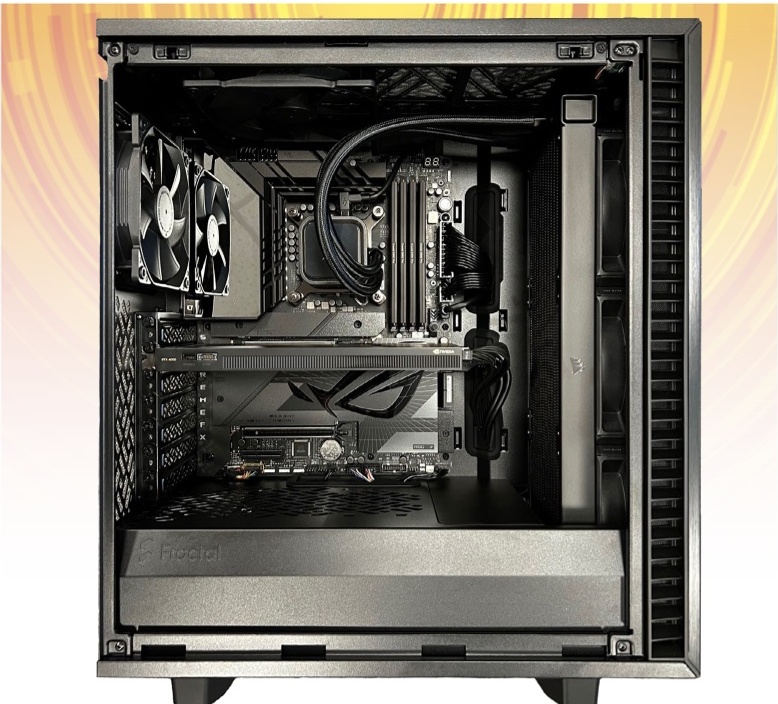Early Verdict
A solid, well-rounded workstation specification, but there are faster systems available.
Pros
- +
Very capable workstation
- +
Makes light work of content creation and rendering tasks
Cons
- -
Alternatives that provide more
Why you can trust TechRadar
This article first appeared in Issue 361 of PC Pro.
British workstation specialist InterPro has quietly been delivering some of the best workstation systems for over two decades now, and the IPW-RL is another case in point. The system combines a sensible selection of components for general content-creation tasks, and backs it up with a huge amount of memory.
The CPU choice is from Intel’s stable, but not the absolute pinnacle of the range. It’s the latest 14th generation, but the Core i9-14900K rather than the slightly faster KS variant. Both CPUs combine eight P performance cores with 16 E efficiency ones, offering base clocks of 3.2GHz and 2.4GHz respectively. However, the K processor has a 5.8GHz P-core maximum Turbo Boost frequency and 6GHz Thermal Velocity Boost, versus 5.9GHz and 6.2GHz respectively for the KS. The E-cores can only hit 4.4GHz with the K versus 4.5GHz for the KS.
What InterPro has saved on the processor has clearly been put towards memory, with 48GB 5,200MHz DDR5 DIMMs filling all four slots on the Asus ROG Maximus Z790 Dark Hero motherboard, for a massive total of 192GB. You’re unlikely to need more RAM for the lifetime of this machine.
Graphics acceleration is sensible for this price point, coming in the form of a PNY Nvidia RTX 4000 Ada Generation card. This sports a whopping 6,144 CUDA cores and 20GB of ECC-protected GDDR6 memory with 360GB/sec bandwidth. The 4000 series is the everyday workhorse of the Nvidia RTX professional range, offering a sensible balance between potency and price.

InterPro also gives you everything you need when it comes to storage. The main system drive is a 2TB Crucial T705 NVMe M.2 PCI Express 5 unit offering blistering 14,157MB/sec sustained reading and 11,884MB/sec writing, according to CrystalDiskMark 8. The secondary 4TB Crucial P3 Plus drive is also an NVMe M.2 unit, but uses a PCI Express 4 bus so delivers more modest sustained reading of 4,783MB/sec, with writing recorded at 4,365MB/sec. That’s going to be more than capable both in terms of speed and capacity for throughput-sensitive tasks such as editing high-resolution video.
All these components are integrated into a Fractal Design Define 7 chassis, a regular sight in the PC Pro workstation Labs over the years. InterPro has chosen the Compact version, which can accommodate two 3.5in or 2.5in drives and up to four 2.5in drives on top of that. This solid black machine has been equipped with a 1,000W Corsair RM1000e V2 PSU, with a 360mm Corsair iCue H150e RGB Elite liquid-cooling system for the CPU.
On an absolute scale, the InterPro’s components are potent, but in this month’s Labs company it falls behind in most areas. The overall PC Pro media benchmark score of 716 would have been a Labs-winning total a few years ago – as would the individual results of 297 for image editing, 649 for video encoding and 901 for multitasking – but it was the slowest overall this month. The Cinebench 2024 multi-CPU rendering score of 1,968 only beats the 12-core Scan system. The Blender render test took 350 seconds on CPU, which was beaten by the 12-core Scan machine.
Sign up to the TechRadar Pro newsletter to get all the top news, opinion, features and guidance your business needs to succeed!
The SPECviewperf 2020 results are similarly adequate for most tasks, but every other system here includes more powerful GPU acceleration. The scores of 161 in 3dsmax-07 and 576 in maya-06 demonstrate excellent 3D modelling animation abilities, while 132 in catia-06, 218 in creo-03, 530 in snx-04 and 360 in solidworks-07 will be great for engineering, CAD or product design. But there are even better scores in this test.
If you use this Nvidia GPU for rendering or AI inference, it also falls behind other systems, taking 124 seconds for the Blender render using CUDA, delivering just 11,853 in LuxMark 3.1 and producing 17,727 in the Geekbench ML 0.6 AI benchmark.
Overall, while this is a very capable workstation that would make light work of most real-time content creation or output rendering tasks, there are alternatives that provide more in either department.
We've rated the best business computers.
Dr James Morris has worked as a technology journalist for over 25 years, including spending nine years on the staff of market-leading computer magazine PC Pro, the last five of which were as the publication’s editor. He specializes in enterprise-grade software and hardware, with a particular focus on content creation.
What is a hands on review?
Hands on reviews' are a journalist's first impressions of a piece of kit based on spending some time with it. It may be just a few moments, or a few hours. The important thing is we have been able to play with it ourselves and can give you some sense of what it's like to use, even if it's only an embryonic view. For more information, see TechRadar's Reviews Guarantee.

